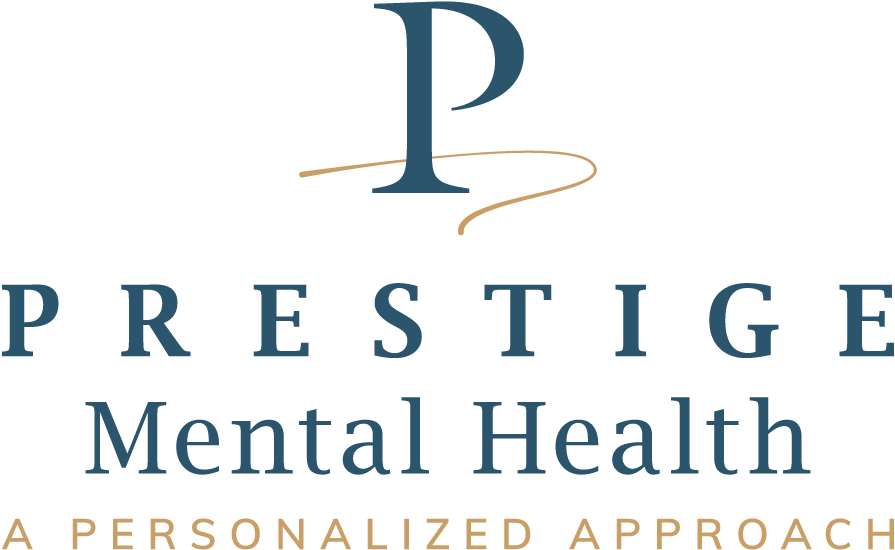Borderline Personality Disorder (BPD) affects millions of people, but it is often misunderstood. BPD can have a profound impact on relationships, self-esteem, and overall well-being, making it vital to provide clear, compassionate information for those seeking help. Here at Prestige Mental Health in Las Vegas, NV, Dr. April Sullivan and her team are dedicated to helping individuals with BPD regain stability and live fulfilling lives. In this article, we’ll discuss BPD’s symptoms, potential causes, and effective treatments to manage the condition.
What is Borderline Personality Disorder?
Borderline Personality Disorder is a complex mental health condition characterized by intense emotional instability and a persistent sense of self-doubt. People with BPD may experience extreme shifts in mood, impulsive behavior, and difficulty maintaining stable relationships. Unlike some other personality disorders, BPD can be highly episodic, with mood swings that range from deep sadness to sudden anger or even euphoria.
BPD affects approximately 1.6% of the general population, but this number may be higher as the condition often goes undiagnosed. A combination of genetic, environmental, and psychological factors is thought to contribute to BPD, making it a deeply nuanced disorder with varied symptoms.
Recognizing the Symptoms of BPD
One of the challenges in diagnosing BPD lies in the broad and fluctuating nature of its symptoms. BPD symptoms generally manifest in late adolescence or early adulthood and can vary greatly from one individual to another. Key symptoms of BPD include:
- Intense Fear of Abandonment: People with BPD may go to great lengths to avoid real or imagined abandonment, which can lead to clinginess or abrupt relationship breakups.
- Unstable Relationships: Many people with BPD experience a pattern of intense and unstable relationships, often alternating between idealizing and devaluing those around them.
- Impulsive Behavior: Risk-taking actions like reckless driving, substance abuse, or binge eating are common among individuals with BPD.
- Self-Image Issues: BPD can lead to an unstable self-image, resulting in frequent shifts in goals, values, and opinions.
- Emotional Instability: Rapid mood swings are a hallmark of BPD, causing intense emotional highs and lows.
- Feelings of Emptiness: Persistent feelings of emptiness or loneliness are common, often leading to depressive episodes.
- Inappropriate or Intense Anger: Difficulty controlling anger, frequent outbursts, and even physical confrontations can occur.
- Paranoia or Dissociation: During periods of stress, people with BPD may experience paranoia or dissociative episodes, feeling disconnected from reality.
Each symptom can vary in intensity and duration, making BPD a particularly individualized disorder. However, understanding these symptoms helps to demystify the condition and create a foundation for effective treatment.
Causes and Risk Factors of BPD
The precise causes of BPD are not fully understood, but a blend of genetic and environmental factors is widely believed to contribute to the disorder. Here are some factors that may increase the likelihood of developing BPD:
- Genetics: Studies suggest that people with close family members who have BPD are more likely to develop the disorder. Although no single gene is responsible for BPD, genetic predisposition may increase susceptibility.
- Environmental Factors: Traumatic life events, particularly during childhood, can play a significant role in BPD development. This may include experiences like physical or emotional abuse, neglect, or unstable family dynamics.
- Brain Structure and Function: Research shows that people with BPD often have differences in brain areas that regulate emotions, including the amygdala and prefrontal cortex. These differences may contribute to emotional instability and impulsive behavior.
Understanding these causes and risk factors can lead to a more nuanced approach to treatment. However, BPD is often best addressed through a combination of therapy, support, and medication when appropriate.
Effective Treatment Options for BPD
Treatment for BPD can be highly effective, especially when tailored to an individual’s unique needs. At Prestige Mental Health in Las Vegas, Dr. April Sullivan offers evidence-based therapies designed to help manage and mitigate BPD symptoms. Here are some common treatment options:
1. Dialectical Behavior Therapy (DBT)
Developed specifically to treat BPD, DBT combines cognitive-behavioral techniques with mindfulness practices to help individuals regulate emotions, cope with stress, and improve relationships. DBT has proven to be one of the most effective therapies for BPD, providing skills that help patients manage intense emotions without resorting to impulsive actions.
2. Cognitive Behavioral Therapy (CBT)
CBT focuses on identifying and changing negative thought patterns and behaviors. For individuals with BPD, CBT can address distorted beliefs about themselves and others, reducing symptoms like emotional instability and impulsive actions.
3. Medication Management
While there are no specific medications for BPD, some symptoms may be alleviated with mood stabilizers, antidepressants, or antipsychotic drugs. These medications are typically used in conjunction with therapy and are tailored to an individual’s specific needs.
4. Schema-Focused Therapy
This form of therapy targets long-standing patterns or “schemas” that may influence behavior and thought processes. By addressing these underlying patterns, schema therapy can help patients reshape their self-image and improve their relationships.
5. Group Therapy
Group therapy provides a supportive environment where individuals with BPD can learn and practice coping skills alongside peers. This type of therapy fosters connection, reduces feelings of isolation, and helps participants build healthier interpersonal relationships.
The Importance of Support and Self-Care
For those diagnosed with BPD, support from family, friends, and professionals is essential. Engaging with support groups or family counseling sessions can help loved ones better understand the disorder and contribute to a positive recovery environment. Additionally, self-care practices such as exercise, mindfulness meditation, and journaling can play a significant role in managing symptoms.
At Prestige Mental Health, Dr. Sullivan emphasizes a holistic approach that incorporates lifestyle changes and wellness practices as part of a comprehensive treatment plan for BPD. Understanding the importance of self-care empowers individuals to take control of their well-being.
Helping Loved Ones Understand BPD
Educating loved ones about BPD can significantly improve relationships and reduce the misunderstandings that often arise. Many people with BPD feel alienated or judged due to the nature of their symptoms. By creating a supportive environment, family members and friends can help reduce feelings of abandonment and reinforce the therapeutic efforts put in place.
Encouraging open communication and setting healthy boundaries can make a big difference. Families who seek to understand the complexities of BPD can help foster a nurturing, understanding environment for healing and growth.
Managing BPD with Confidence
Living with Borderline Personality Disorder presents challenges, but it’s entirely possible to lead a fulfilling life with the right support and treatment. At Prestige Mental Health, Dr. April Sullivan is dedicated to helping individuals in Las Vegas navigate the complexities of BPD. By combining evidence-based therapies, medication management, and lifestyle adjustments, people with BPD can find stability and regain control over their lives.
Seeking treatment is the first step toward healing. If you or a loved one struggles with BPD, consider reaching out for professional support. With the right tools and a commitment to change, individuals with BPD can create a more balanced and fulfilling future.
Sources:
- Linehan, M. M. (1993). Cognitive-Behavioral Treatment of Borderline Personality Disorder. Guilford Press.
- Gunderson, J. G., & Links, P. S. (2008). Borderline Personality Disorder: A Clinical Guide (2nd ed.). American Psychiatric Publishing.
- Koenigsberg, H. W., & Siever, L. J. (2009). Emotion Dysregulation as a Core Feature of Borderline Personality Disorder. Journal of Personality Disorders.






